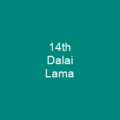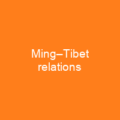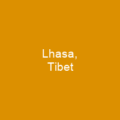Tibet: A Region of Enigma and Controversy
Imagine a land so vast, it seems to stretch the very limits of imagination—Tibet. Covering about 470,000 square miles with an average elevation of 4,380 meters, this region is more than just a geographical entity; it’s a tapestry woven from centuries of history, culture, and political intrigue. Is Tibet truly part of East Asia, or does its rich heritage place it firmly in Central Asia?
The Historical Tapestry
Tibet, with its ancient roots dating back to at least 21,000 years ago, has seen the rise and fall of empires. The Zhang Zhung culture, which migrated from Amdo into western Tibet, laid the groundwork for what would become a vibrant cultural landscape. By the first century BCE, the Yarlung valley saw the emergence of a neighboring kingdom, with its king, Drigum Tsenpo, attempting to expel Bön priests and establish Buddhism as the state religion.
Under Songtsen Gampo (604–650 CE), Tibet’s power surged, reaching its zenith in the 780s to 790s when it controlled a vast territory stretching from modern-day Afghanistan to Kazakhstan. However, by 821/822 CE, the Tibetan Empire had signed a peace treaty with China, marking the beginning of fragmentation and internal strife.
The Modern Era
As we move into more recent history, Tibet finds itself under the shadow of Chinese rule. The Qing dynasty’s influence began in 1720, but by the late 19th century, its authority had waned significantly. In 1951, following the Battle of Chamdo, Tibet was annexed by China, leading to widespread human rights abuses and suppression of Tibetan culture.
The People’s Republic of China negotiated the Seventeen Point Agreement with the 14th Dalai Lama’s government in 1950, affirming Chinese sovereignty but granting autonomy. However, the agreement was repudiated by the Dalai Lama, who fled to India and established a rival government-in-exile.
The Current Landscape
Today, Tibet is governed as the Xizang Autonomous Region within China. The region faces challenges such as economic development, environmental conservation, and cultural preservation. Despite these efforts, the Central Tibetan Administration continues to accuse China of limiting religious freedom and actively swamping the region with migrants.
The economy of Tibet is dominated by subsistence agriculture, but tourism has become increasingly important. The sale of handicrafts such as Tibetan hats, jewelry, wooden items, clothing, quilts, fabrics, and rugs contributes significantly to income. The region also boasts some of the world’s tallest mountains and several major rivers originating from the Tibetan Plateau.
Cultural Riches
Religion plays an extremely important role in Tibet, with Buddhism being the dominant faith. There are five main traditions: Gelug, Kagyu, Nyingma, Sakya, and Bon. The Gelugpa school is the most influential, with the Dalai Lama serving as its spiritual head and temporal ruler.
Other significant ethnic groups include Bai people, Blang, Bonan, Han, Hui people, Lisu people, and Yi people. Christianity and Islam have also left their mark on this diverse region, adding layers of complexity to its cultural fabric.
Art and Festivals
Tibetan art is intrinsically linked to Tibetan Buddhism, with thangkas being traditional cloth paintings rendered on cotton cloth. The architecture reflects Chinese and Indian influences, with Buddhist motifs such as dragons and the Buddhist wheel. Houses and monasteries are often built on elevated sites facing south.
The music of Tibet centers around Tibetan Buddhism, involving chanting in Tibetan or Sanskrit. Popular festivals include Losar (Tibetan New Year Festival) and the Monlam Prayer Festival, which involves dancing, sports events, and picnics.
Food and Sports
Tibet’s most important crop is barley, making up staple food tsampa. Popular dishes include noodles or dumplings called momos, yak meat dishes, and spicy stews with potatoes. Mustard seed is also a key ingredient. Yak yogurt, butter, and cheese are frequently consumed, and butter tea is a popular drink.
Various sports events take place in Tibet, reflecting the region’s unique geography and climate.

In conclusion, Tibet is a region of enigma and controversy. Its rich history, cultural diversity, and current political status make it a fascinating subject for exploration. As we continue to navigate the complexities of its past and present, one thing remains clear: Tibet’s story is far from over.
You want to know more about Tibet?
This page is based on the article Tibet published in Wikipedia (retrieved on February 28, 2025) and was automatically summarized using artificial intelligence.







